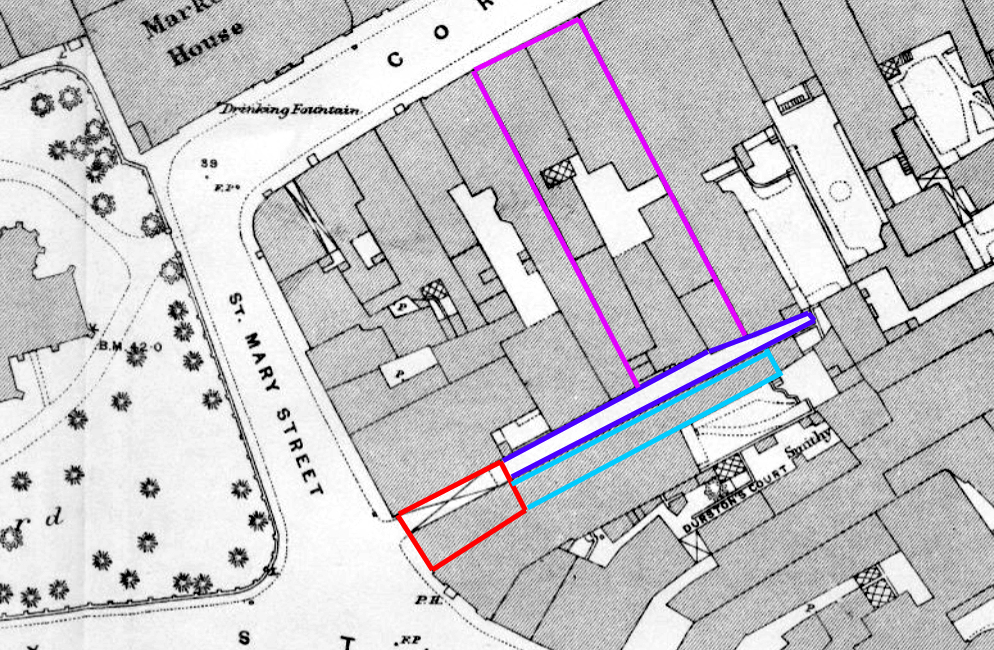The Cupola the old name for 42 St Mary Street.

In 1738 the property was called the ‘Gate House’ or ‘Cupola’, described as built over the west end of a passage, which included a number of rooms built along the south side of the passage (SRO D/B/bw/1685,1734). This passage was the rear entrance to the Swan Inn on the Cornhill (now the site of the Cornhill pub), primarily used for horses and coaches (D/B/bw/CL/95). The rear entrance to the Swan is first mentioned in 1564 (D/B/bw/CL/95).

The name ‘Cupola’ is perplexing. It tends to refer to cup-shaped features, although these can go up as well as down. A cupola on a roof is a small dome, often with a bell underneath. However it can also refer to a cup-shaped hole in the ground used for smelting, especially for bells. So this building may have once had a bell tower on the roof, or it might have once been an industrial site (although the narrow nature of the site might suggest against this.
From 1832 the property was leased by Richard Burt, a linen draper, when it was described as ‘a dwelling house and shop… formerly known as the Cupola’. The property measured 26 feet 4 inches along St Mary Street and 44 feet 6 inches deep. By this time the buildings along the passageway were no longer part of the property.
Miles Kerr-Peterson 25 September 2020
